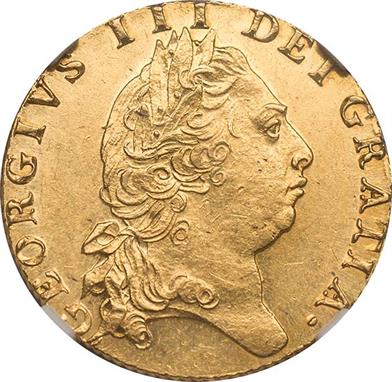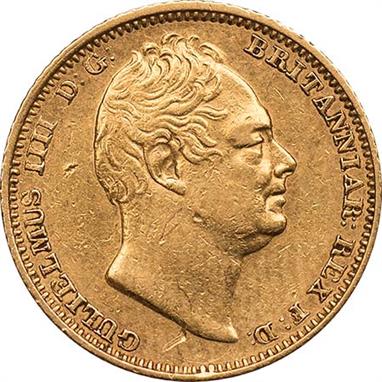We found 297893 price guide item(s) matching your search
There are 297893 lots that match your search criteria. Subscribe now to get instant access to the full price guide service.
Click here to subscribe- List
- Grid
-
297893 item(s)/page
Charles II, halfcrown, 1666/4, XVIII, third laur. bust r., rev. crowned cruciform shields, interlinked Cs in angles (S.3363; ESC.461), in plastic holder, graded by PCGS as Extremely Fine 45 *ex Colin Adams collection, Spink 177, 1 December 2005, lot 296 ex P. Bateman, Bonhams, 4 June 1998 One of the great rarities in the milled halfcrown series. Normally seen in very worn condition, and indeed seldom found for sale in any grade, this is the finest known.
James II, tin farthing, 1685, laur. bust r., rev. Britannia std. l., with shield and spear (S.3420; P.547), in plastic holder, graded by NGC as Mint State 62, a couple of corrosion spots on reverse, otherwise brilliant mint state, extremely rare in this grade Only four graded by NGC, and this is the highest at MS62.
William III, crown, 1697, NONO, by James Roettier, third laur. and dr. bust r., rev. crowned cruciform shields, second harp with eight strings (S.3473; ESC.96[R3]; EMC.371), in plastic holder, graded by PCGS as About Uncirculated 55, toned, well-struck, extremely fine, of the highest rarity thus *ex J. G. Murdoch, Sotheby, 13 June 1903, lot 792 ex T. Wakley, Sotheby, 6 December 1909, lot 173 ex T. Bliss, Sotheby, 16 May, 1916, lot 561 ex V. M. Brand, private transaction ex E. E. Yates, collection purchased by A. H. Baldwin, 1938 ex K. R. R. Readhead, collection purchased by A. H. Baldwin, 1950 ex Lieut. Col. G. T. Pearce, collection purchased by A. H. Baldwin, 1978 ex Spink Numismatic Circular, October 1987, no. 5796 ex Myron Kaufman, Spink auction 124, 18 November 1997, lot 1885 Almost certainly the finest known 1697 crown, all other specimens are in fair to about very fine condition.
George III, Bank of England, proof dollar, 1804, type E/2, struck in silver on a thick flan, laur. and dr. bust r., C.H.K on truncation recut, rev. Britannia seated l. within oval band (ESC.167 var.; L&S.78), in an old plastic holder, graded by NGC as Proof 64, attractively toned, mint state, extremely rare
George III, Bank of England, proof dollar, 1804, type K/3, struck in copper on a thick flan, laur. and dr. bust r., rev. Britannia seated l. within oval band (ESC.-; L&S.-), in plastic holder, graded by PCGS as Proof 64 Brown, extremely rare For a similar piece, see St. James`s Auction 18, 27 September 2011, lot 316.
George III, pattern crown, 1817, by W. Wyon, laur. head r., rev. FOEDUS INVIOLABILE (`Invulnerable, or Unbroken, League`), three feminine gowned figures holding onto one another as a linked chain, symbolic of the united kingdoms of Ireland, England and Scotland (the `Three Graces`), with harp, St. George shield and thistle upon the exergue line, in ex. palm-branch and quiver, plain edge (ESC.223 [R2]; L&S.152), in plastic holder, graded by NGC as Proof 66 Cameo, beautifully toned, very rare and the finest graded *ex A.G. Wyon estate (1962) ex Spink Numismatic Circular (1 of 3), February 1984, 435 ex Spink, Selig II, March 1999, lot 1188 ex St. James`s Auction 2, May 2005, lot 375 A decade before he was appointed to the post of Chief Engraver at the Royal Mint, William Wyon conceived of and engraved a pattern for a crown that has earned a reputation over the past two centuries as being one of the most beautiful and sharply engraved of all crown-sized coins of the world. It is famous world-wide and aggressively pursued. In terms of popularity, it stands alongside Wyon`s other classic work, accomplished during Queen Victoria`s reign, his famous, elegant `Una & the Lion` gold coin created for Victoria`s coronation, in which the young monarch is depicted leading the British lion forward, and indeed in 1839 the British Empire was heading toward its zenith. But whereas Wyon`s `Una` is the product of a mature, well-known and confident artist, Wyon`s `Three Graces` is the bold product of an unknown, young artist, bursting with talent, who competed to design the first modern crown produced by steam. Though he lost to another, due in part to bias against him by the Master of the Mint, he created a masterpiece and went on to fulfill his destiny as one of the greatest coin artists in history. Whoever owns this coin, then, is linked, in a tangible way, to William Wyon, and to an historic epoch in British history. The `Three Graces` pattern crown, here represented by one of the finest extant pieces known in silver, both captures the essence of its age and pays homage to a mythic history in its symbolic reverse image of a trio of `graces` identified within the image (by the icons at their feet) as representing the legislative union of the three kingdoms of England, Scotland and Ireland. The simple, bold Latin legend usually translated as `An Unbreakable Treaty` states a legal fact; however, beyond a legal statement, Wyon`s elegant design shows the relationship between the kingdoms to be one based on mutual respect and equality, not on force. This is the true meaning Wyon hoped to convey, and, in addition, his purposeful choice of the `graces` to convey this message connects him with the superb artists of antiquity. For the theme dates back thousands of years. The ancient Greeks called them the Charities. The Romans dubbed them the Gratiae and viewed them as goddesses – the holy trio of charm, beauty and creativity. Throughout the Renaissance, and for two centuries afterward, their enchanting form was depicted variously in paintings and sculptures across Europe. William Wyon was the first artist to fashion them in metal for a coin. He captured their essence as well as any engraver of coins or medals has ever modelled a theme. It is a perfect image from the robust, adventurous Romantic Age when Lord Byron swam the Hellespont and wrote his epic of Don Juan, when Keats lost himself in romantic imagery, when mystical writers like De Quincey experimented with mind-expanding opiates, and when the Shelleys wrote about mankind`s attempts to tame nature and out of this triumph to fashion a new age. Without these inspirations, the British Empire would never have dared expand into its final, boundless form. The obverse of this pattern crown is also an extraordinary feat of engraving. The portrait of King George III is arguably the finest of him extant in metal, deeply engraved into the die and therefore the struck image appears in high relief; not only is it majestic, though, for clearly it is reminiscent of the finest portraits of emperors produced in ancient Rome. This portrait appears, in its finest form, on only two coins: this pattern and its counterpart from Wyon, the famous `Incorrupta Crown` showing a huge, boldly formed crowned royal shield on the reverse side. There, the legend translates to mean `Untarnished Faith` and clearly each respective reverse inscription alludes to the union of the three kingdoms. Of the two patterns, though, only the `Three Graces` reverse captivates the viewer`s eye as profoundly as does `Una & the Lion`, with which it shares a sense of unsurpassable national pride. Importantly, both of William Wyon`s pattern crowns of 1817 came into existence as suggestions for the design of the largest silver coin struck late in the reign, but the finally accepted version was a compromise. Wyon`s monarchial portrait was modified only slightly, but it was mated with Pistrucci`s Saint George reverse; and the issuance took place for just three years, from 1818 until early 1820, when the king passed away without ever realizing that his reign, at its very end, was to leave to posterity one of the greatest of all coins – this rare pattern offering the indelible image of a kingdom truly united. Significantly, this specimen was held by the Wyon family for almost a century and a half before it finally appeared on the market in 1962. Perhaps the engraver himself once possessed it. Whether he touched it or not, it has been treasured by a mere handful of collectors since it was minted, and it is surely one of the most desirable and charming of all English crowns.
Victoria, pattern `Jubilee Head` crown, 1887, in silver, by J. R. Thomas for Spink & Son, VICTORIA · BY · THE · GRACE · OF · GOD · QUEEN · OF · GREAT · BRITAIN · EMP : OF · INDIA __, veiled, draped bust l. wearing the bejeweled `small crown` often used on state occasions in the Victorian Era, all within a border of small roses, thistles and shamrock forming a perfect circle enclosing the royal portrait (the so-called Ornate Border), plain truncation without signature, rev. FIVE SHILLINGS above royal arms with supporters, MDCCCLXXXVII and spray below, all within an identical border of roses, thistles and shamrock, plain edge (ESC.345 [R4]; L&S.78), boldly detailed from a proof striking, richly toned, about mint state, rarely seen and in all a delightful example of this intricately engraved, stylish, late-Victorian pattern J. Rochelle Thomas was a Victorian dealer in antiques and curios avidly collected in his time, located in London. He is known to have had a strong interest in medals featuring portraits of celebrities, but he also involved himself in what have long been dubbed unofficial patterns, some of which were truly exquisite in execution and inspired in their designs. He was behind the creation of the Egyptian-styled `Bonomi` crowns dated 1837 but in reality made during the same period of time as the crowned pattern seen in this lot. His novel idea for the Bonomi piece was to cut the dies in relief, producing the curious incuse-design featuring the Queen as a goddess of ancient Egypt. This was a bold move in its day, a style of engraving dies not repeated until some half a century later in America for its Indian Head quarter-eagles and half-eagles first struck in 1908 and used until 1929. In 1887, the English attempt to be distinctive failed to achieve official approbation and was relegated to history. Having to deal with this rejection, Thomas then attempted the exact opposite in style - a rendering of the Queen in relative high relief showing a lifelike portrait with her dress and veil intricately engraved, and on its reverse side a classic presentation of the royal crest supported by a crowned lion and a unicorn, the motif perfectly centred with various decorative flourishes. Thomas engaged the German die-sinkers Lauer to create his steel dies and then to strike off samples of his crown. Using the latest equipment, the Lauer firm produced truly exceptional patterns, equal in every way to all `official` efforts. Thomas hoped that his effort would meet with approval for the Golden Jubilee coinage of 1887, and he engaged the lofty firm of Spink & Son to present his sample coinage. No reason was given to Thomas for rejecting his pattern crown and other denominations of this style, but possibly his coins were deemed too difficult to strike with any degree of consistency, or possibly the German influence undermined his suggestions for a uniquely fashioned, majestic coinage to replace the familiar young portrait of Victoria. Only a few samples were minted (including silver, aluminum, and gold pieces), and today`s collectors highly value the obvious artistry dismissed so long ago.
-
297893 item(s)/page



























































